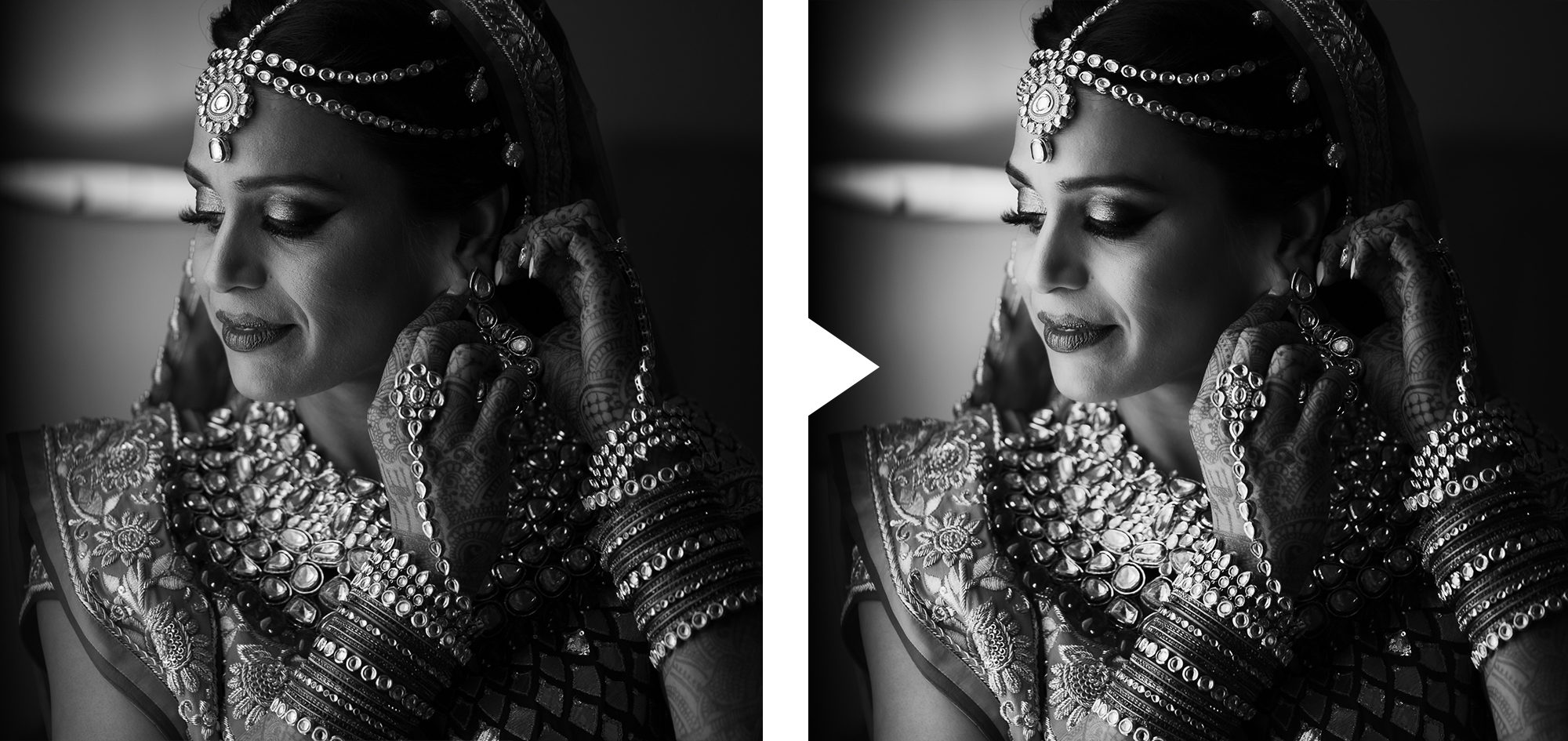
When the computer’s best guess at sampling similar pixels was in fact not a great guess, you can move the sample area by placing the cursor over the 2nd circle that has an arrow attached to it, and move it to a better location. To change the coverage area, place the cursor over the original area, and when the cursor turns into the hand tool, you can then move the location. You may find that after you make modifications, you still need to make slight adjustments to the original coverage area, the area being sampled, or the brush size. To do this, I placed the cursor over the area and clicked once. In this case, I chose to remove a blemish on the woman’s chin. With everything setup correctly in heal mode (as shown in step 2), you can now select an area to retouch. Heal mode works by automatically sampling nearby “best guess” pixels that will perfectly blend in with the area you're retouching. This is an amazing tool that can instantly and easily remove unwanted spots on your images. It’s now time to use Lightroom’s spot removal tool in heal mode in order to remove wrinkles and blemishes. STEP 4 - Selecting and Removing Blemishes in Heal Mode

For instance, if you're trying to tone-down wrinkles and don’t want to delete them, this will give the portrait a more natural or realistic look. You'll want to adjust the opacity when you don’t want to cover up a spot completely. The feather feature can come in handy when you need to soften edges, since a hard edge can be more noticeable in some instances. For the brush size, you’ll want to use the smallest size possible - just enough to cover the area you’re trying to retouch. This includes adjusting the brush size, feather, and opacity. Or, for even quicker results, simply press the letter “Q”.īefore you start retouching, it’s a good idea to adjust your options to get the effect you’re hoping for. Quick Tip: You can also make the spot removal icon and tools available by selecting VIEW > SPOT REMOVAL from the drop down menu at the top of the page. Since we're starting with the heal mode, go ahead and select that as well. Doing this will display spot removal options right below it. Select the spot removal icon, which is a white circle with an arrow on the right side. Once this is selected, the spot removal icon will appear just below the colorful histogram box. If you notice that your spot removal options are not visible, you’ll need to make sure develop mode is selected in the top menu. This can be done with the image in the navigator box or with the main image. Once you’re zoomed in, you can move the image around with the hand tool to pin-point the exact location you want. I found it gave me the best magnification for what I needed to do. Quick Tip: For a quick way to magnify your image in Lightroom, go to VIEW > ZOOM IN from the drop down menu at the top of the page.įor this particular image, I’m choosing to work in 1:2. For additional zoom options, select the vertically stacked arrows facing opposite directions. See arrow below. Experiment with the 4 options, Fit, Fill, 1:1, and 2:1 to see what view they produce. To do this, in the top right-hand corner, in the navigator panel, you have a few view options available. RETOUCHING IN HEAL MODE STEP 1 - Zooming in for a Better Working Viewįirst, you'll want to zoom into the location you would like to retouch. You should see something similar to the set-up below.
PORTRAIT RETOUCHING LR HOW TO
Check out our Lightroom portrait presets collection to add these to your toolkit. These tools can yield amazing results and take your images to the next level, so let’s dive in and learn how to use them!įirst things first, let’s get your image into Lightroom.
PORTRAIT RETOUCHING LR SKIN
The tools that we're going to focus on today are the spot removal tool in heal mode, as well as the adjustment brush soften skin effect.
PORTRAIT RETOUCHING LR PROFESSIONAL
Lightroom offers specific retouching tools that will enable you to present professional portraits to your clients that you can feel confident about. That’s where Lightroom post-processing comes in. But how? What tricks are they using? Although photographers with extensive experience may know some tricks of the trade to minimize imperfections while they are shooting, one can only do so much during a shoot. It goes without saying that professional photographs look flawless.


 0 kommentar(er)
0 kommentar(er)
